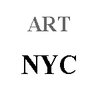
A secret art museum
Western Art, Finding Hidden Stories
Author: Choi Yeonwook
Publishing: Thinking Station
Published: 2016.01.05.
Table of Contents
·Starting with
PART 1 The "something" that made the Genius Painter
01 "Davinci Code" exists?
02 Vincent van Gogh was a walking general hospital?
03 Drugs that made Cubism, alcohol that killed Caravaggio
04 At 76 years old, Dali learned the four-dimensional formula
05 Picasso, Marketing Yourself!
PART 2 Finding Hidden Pictures
01 The devil who came to the funeral of St. Francis
02 Perseus, who are you in the back of your head?
03 Peter Bruehull's love for Nga
04 Rembrandt, Captain Banning Cork makes 'George' catch?
05 U.S. Declaration of Independence and $2 Bill
06 Rodin's lips kiss out of reach
PART 3 Love and War in Art History
01 Love and War Renaissance episode
02 You loved your friend's wife
03 Mane's Bean Powder Family Affairs
04 Dali and Gala's fight for their lives
05 Jan Peggy Guggenheim with 1,000 Men for Ugly Nose
PART 4 Painters and Models
01 Venus, the 10th figure who was born with unrequited love
02 Ingres Stole Teacher's Model
03 an actual model who almost froze to death in the bathtub, Lizzie Siddles
04 Dali, obsessed with Hitler?
05 In the United States, even ordinary neighbors become models.
Part 5 painters are all the same people!
01 Genius Michelangelo's timid revenge
02 Vermeer, actually a sly older man?
03 Cézanne, who gave up her position as president of the bank and became a painter
04 Vincent van Gogh's maniacal belief in God
05 Man Standing at Diego Rivera's Intersection Dominates the Universe with Political Revenge
PART 6 A medium of happiness and healing, art
01 Van Gogh's Only Self-Portrait Without a Beard
02 Friendship Remains as a Legend and One Picture Sold Live
03 President George Bush, is Rembrandt in me?
04 Art, isn't it easy?
05 Gave me a new life
Appendix 01-1 Painter Says This!
01-2 Uncle Bob Tells the World
02 If you want to meet art in your daily life?
Interesting art sites & apps
Leonardo da Vinci was mainly active in Milan. Completed in 1498, The Last Supper is a substantial 8.8-meter mural painted in the dining room of the Santa Maria della Grazie annex of Milan's Santa Maria della Grazie.
Da Vinci painted the dried wall. Some colors, such as blue, cannot be expressed well when painting a mural using a fresco method. The problem is that paint is put on a drywall, and the color fades and falls off over time. It is said to have suffered considerable damage in 1517 and utterly unrecognizable in 1586. Thus, in 1625, the monks made a large hole in the wall to damage the foot of Jesus, saying that a door should be built. The restoration was started by Michelangelo Bellotti in 1726 but was ruined by a lack of skill. Napoleon occupied the restaurant where the Last Supper was held as a stable in 1769 when he invaded Milan. Throwing horse dung and digging a circle on the wall (the position of the eyes of the twelve disciples), did not know that it was a work.
Flooding flooded in 1800. Research on the painting was planned in the early 1900s. But World War II. From 1979 to 1999, the Italian government and art-related organizations worldwide completed the most extensive art restoration in human history. It takes more than 20 years of time, tremendous cost, and a workforce.
Since the color and method of Da Vinci's original painting have changed, it may no longer be his work.
Giovanni Maria Pala, an Italian musician and computer handler, found that the twelve disciples' hands and bread were on the same line, 2003
The last super composition.
The Mona Lisa.
55 cm wide, 77 cm long
You've been working on it for 14 years; what other Mona Lisa works do you have?
It is said that the Isleworth Mona Lisa has been hidden in a Swiss bank vault for more than 40 years. The research shows that it was from the early 1500s and may have been painted by Da Vinci.
Second, the Mona Lisa at the Prado Museum in Madrid turned the art world upside down after a two-year restoration in 2010.
The mountains, valleys, and rivers are clear, and the composition and proportion of the Mona Lisa in the Louvre coincide with the eyes, nose, mouth, eyebrows, lips, and jawline. When I looked at the two artworks, I found that stereoscopic technology, a 3D effect, was applied. Perhaps because of the research, da Vinci spent 14 years working on them and found them incomplete. See the April 2014 scientific journal <science news>.

![[100 Challenge] DanJi’s reading note_04](http://artnycnewyork.com/cdn/shop/articles/IMG_2253_1100x.jpg?v=1704645634)